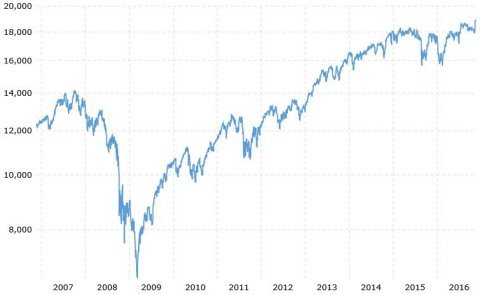audreyh1
Give me a museum and I'll fill it. (Picasso) Give me a forum ...
Because of market volatility, I don't think you can use the analysis this way for the same reason annual average returns cannot be used to predict the survival rate of a portfolio, and why FIRECALC uses actual historical runs to see how high/low your portfolio gets each year and which year you would run out of money.Here's a simpler way to look at it. From my earlier post,
This means that the portfolio (without withdrawal) is exactly flat once inflation is accounted for. Your spending should be also adjusted for inflation. So, let's think about the dollar in 1966 valuation terms.
You have $1M to start out with. It stays constant (in 1966 terms).
You keep spending 3% a year, again in 1966 terms. So, in 10 years, you spend 30%, and so forth. In 17 years, you spend 3 x 17 = 51%. No matter what the nominal value is, your portfolio has shrunken to 1/2 of its original purchasing power.
What I found as very interesting is that it was the same whether you do 100% stock or 100% T-Bill in that 17-year period.
You can keep some "off-portfolio" money, and if it also has no gain, your total on+off portfolio is still the same. It can be 100% off-portfolio or 100% on-portfolio, your total amount still goes down to 1/2 in 17 years.
Now, one can look closer and see if an opportunist could rebalance between the two stock and T-bill, as they probably were not always in sync. He could pick up a bit of gain there. This is something I am going to look at for myself next, using the raw data from the Fed.
Last edited:


 We are doomed!
We are doomed!